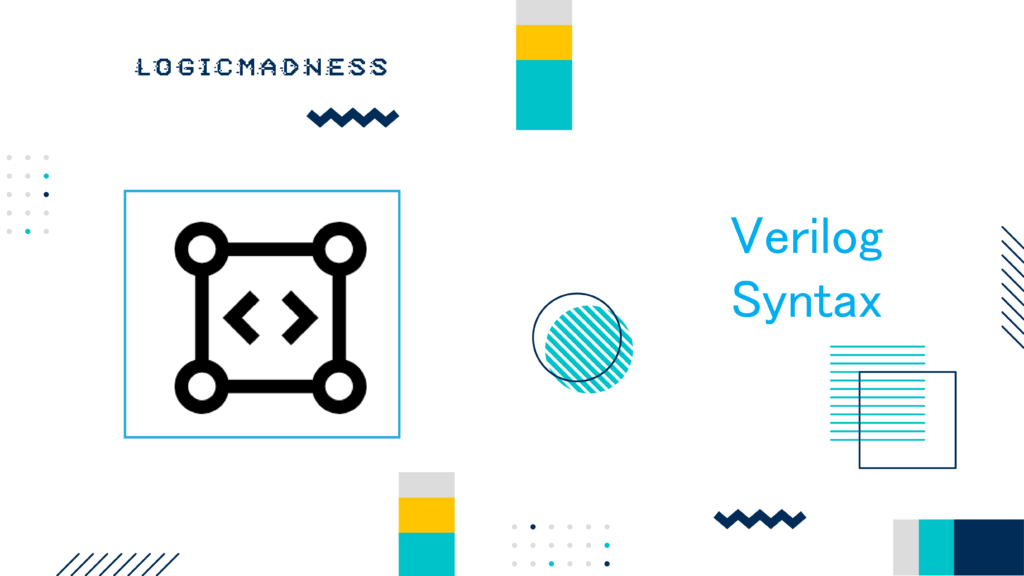The JK flip-flop is a fundamental component in digital electronics. It is one of the most versatile flip-flops used in sequential logic circuits to store one bit of data. The JK flip-flop is often preferred because it eliminates the undefined state found in SR flip-flops, making it more reliable also we will write verilog code for jk flip flop with different types of modeling and type.
In a JK flip-flop, there are four possible states for the inputs:
- Logic 1
- Logic 0
- No Change
- Toggle
This flip-flop is triggered by a clock signal, making it useful for clocked sequential logic circuits.

Key Features of the JK Flip-Flop
- Versatile: Unlike the SR flip-flop, the JK flip-flop does not have an undefined state, making it more stable.
- Clocked Sequential Logic: The JK flip-flop stores one bit of data and changes its state based on the clock signal and input values.
- State Behavior: It has four unique input combinations that determine its state.
Hardware Schematic for JK Flip-Flop
The basic JK flip-flop hardware setup consists of a clock, two inputs (J and K), and one output (Q). Below is a simple Verilog implementation of a basic JK flip-flop.

Verilog Code for Basic JK Flip-Flop
Basic JK Flip-Flop
Here is a basic Verilog code for JK flip-flop that simulates the behavior of the flip-flop using always blocks to trigger on the clock’s positive edge.
module jk_ff (
input j,
input k,
input clk,
output reg q
);
always @ (posedge clk) begin
case ({j, k})
2'b00 : q <= q; // No Change
2'b01 : q <= 0; // Reset
2'b10 : q <= 1; // Set
2'b11 : q <= ~q; // Toggle
default : q <= q; // Default state
endcase
end
endmodule
Testbench for JK Flip-Flop
A testbench is required to simulate and test the Verilog code for JK flip-flop. Here is an example testbench:
module tb_jk;
reg j, k, clk;
wire q;
// Clock generation
always #5 clk = ~clk;
// Instantiate the JK flip-flop
jk_ff jk0 ( .j(j), .k(k), .clk(clk), .q(q));
// Test sequence
initial begin
j <= 0;
k <= 0;
#5 j <= 0; k <= 1;
#20 j <= 1; k <= 0;
#20 j <= 1; k <= 1;
#20 $finish;
end
// Monitor outputs
initial
$monitor("j=%0d k=%0d q=%0d", j, k, q);
endmodule
Types of JK Flip-Flops
1. Edge-Triggered JK Flip-Flop
In an edge-triggered JK flip-flop, the state of the flip-flop is determined by the transition of the clock signal (positive edge). It consists of two main parts: a master gated D latch and a slave gated SR latch.
Schematic and Behavior:
- Master latch takes inputs J, K, and clock (C).
- Slave latch takes the outputs of the master latch.
- The clock input controls the master and slave latches to ensure that only one latch is active at a time, eliminating transparency between inputs and outputs.
Verilog Code for Edge-Triggered JK Flip-Flop
module jk_ff_edge_triggered(
output Q,
output Qn,
input C,
input J,
input K,
input RESETn
);
wire Kn, D, D1, Cn, Cnn, DQ, DQn;
// Reset logic
assign D1 = !RESETn ? 0 : D;
not(Kn, K);
and(J1, J, Qn);
and(K1, Kn, Q);
or(D, J1, K1);
not(Cn, C);
not(Cnn, Cn);
// Latch and flip-flop components
d_latch dl(DQ, DQn, Cn, D1);
sr_latch_gated sr(Q, Qn, Cnn, DQ, DQn);
endmodule
2. JK Flip-Flop without Reset
A JK flip-flop without reset works similarly to the edge-triggered flip-flop but lacks an external reset feature. Here’s the Verilog implementation:
module jk_ff(clk, j, k, q);
input clk, j, k;
output reg q;
always @(posedge clk) begin
case({j, k})
2'b00: q <= q;
2'b01: q <= 0;
2'b10: q <= 1;
2'b11: q <= ~q;
default: q <= q;
endcase
end
endmodule
3. JK Flip-Flop with Synchronous Reset
Here is an example of a JK flip-flop with synchronous reset. The flip-flop will reset to 0 when the reset signal is active.
module jk_ff(clk, reset, j, k, q);
input clk, reset, j, k;
output reg q;
always @(posedge clk) begin
if (reset)
q <= 0;
else begin
case({j, k})
2'b00: q <= q;
2'b01: q <= 0;
2'b10: q <= 1;
2'b11: q <= ~q;
default: q <= q;
endcase
end
end
endmodule
4. JK Flip-Flop with Asynchronous Reset
In the case of an asynchronous reset, the flip-flop resets to 0 as soon as the reset signal is active, regardless of the clock.
module jk_ff(clk, reset, j, k, q);
input clk, reset, j, k;
output reg q;
always @(posedge clk or negedge reset) begin
if (~reset)
q <= 0;
else begin
case({j, k})
2'b00: q <= q;
2'b01: q <= 0;
2'b10: q <= 1;
2'b11: q <= ~q;
default: q <= q;
endcase
end
end
endmodule
Gate-Level Modeling of JK Flip-Flop
The gate-level modeling of a JK flip-flop uses basic logic gates such as NAND gates to describe the behavior of the flip-flop.
Here’s an example of a JK flip-flop using gate-level modeling:
module jk_ff_gate(q, qbar, clk, j, k);
input j, k, clk;
output q, qbar;
wire nand1_out, nand2_out;
// NAND gate logic
nand(nand1_out, j, clk, qbar);
nand(nand2_out, k, clk, q);
nand(q, qbar, nand1_out);
nand(qbar, q, nand2_out);
endmodule
Behavioral Modeling of JK Flip-Flop
Behavioral modeling is the highest level of abstraction in Verilog. Instead of focusing on gate-level implementation, you describe the flip-flop’s behavior directly, often using a simple truth table.
Truth Table for JK Flip-Flop:
| CLOCK | J | K | Q | Q’ | STATE |
|---|---|---|---|---|---|
| ↑ | 0 | 0 | Q | Q’ | No change |
| ↑ | 0 | 1 | 0 | 1 | Reset |
| ↑ | 1 | 0 | 1 | 0 | Set |
| ↑ | 1 | 1 | Q’ | Q | Toggle |
Verilog Code for Behavioral Modeling
module jkff_behave(clk, j, k, q, qbar);
input clk, j, k;
output reg q, qbar;
always @(posedge clk) begin
if (k == 0) begin
q <= 0;
qbar <= 1;
end
else if (j == 1) begin
q <= 0;
qbar <= 0;
end
else if (j == 0 & k == 0) begin
q <= q;
qbar <= qbar;
end
else if (j == 1 & k == 1) begin
q <= ~q;
qbar <= ~qbar;
end
end
endmodule
RTL Schematic of JK Flip Flop

Conclusion
The JK flip-flop is an essential building block in sequential logic circuits. Using Verilog, it can be modeled at various abstraction levels, from gate-level to behavioral modeling. Understanding the Verilog code for JK flip-flop and how it works is fundamental to designing complex digital circuits.

